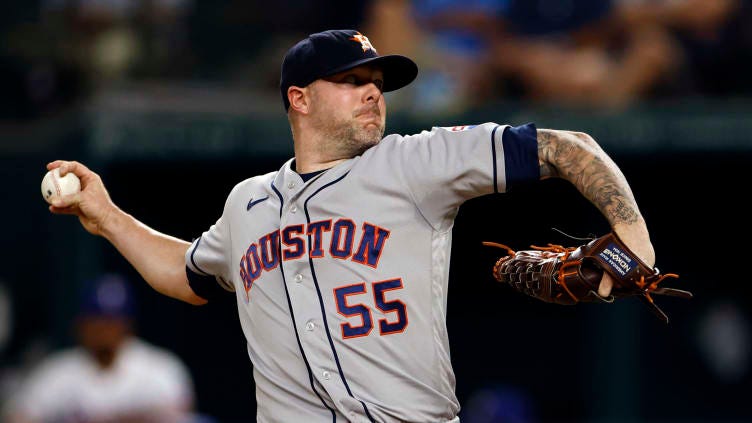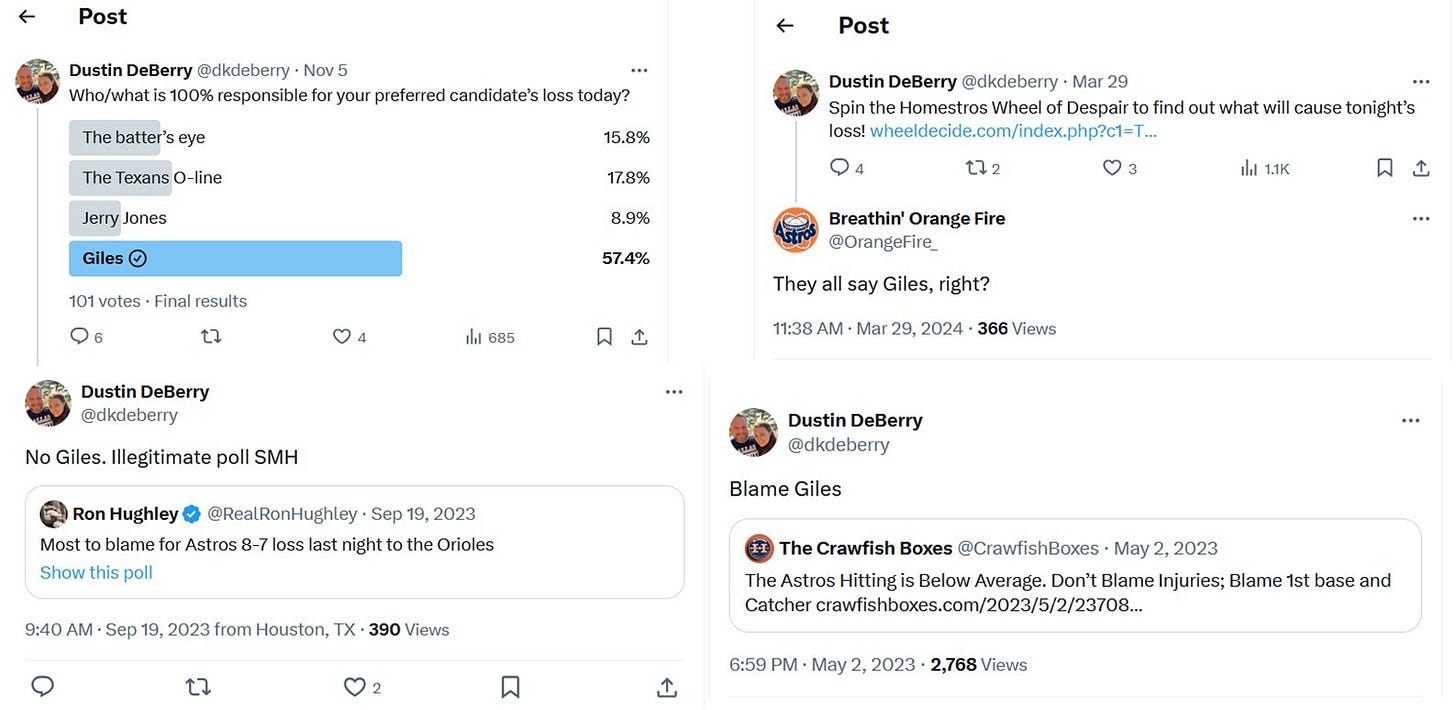Do Ryan Pressly Trade Rumors Signal a Change in How the Astros Build The Bullpen?
The Astros are considering trading Ryan Pressly. It may signal a shift in a nearly decade long strategy of acquiring bullpen arms to letting them emerge.
On Wednesday, Chandler Rome reported that “The Astros have had internal discussions about trading setup man Ryan Pressly, according to two people briefed on the conversations.”
My thoughts turned to Ken Giles. Not because I’m trying to do a Dustin DeBerry bit of saying every bad thing that happens to the Astros can be blamed on Ken Giles, though I do enjoy the hell out of that bit.
No, I thought of Giles because the Astros trade for him in December 2015 began a long period of the Astros front office—across 3 different general managers—putting a great deal of resources into acquiring bullpen arms.
When the Astros signed Josh Hader, I wrote that:
The front office has tended to place a great deal of their resources into the bullpen, whether on the free agent market (c.f. Neris, Joe Smith), re-signing its own players (Ryan Pressly twice, Rafael Montero), or on the trade market (Ken Giles, Roberto Osuna, Kendall Graveman twice, and Phil Maton).
The Astros have centered their bullpen on major league veterans with proven track records, and the large salaries that come with such track records. In 2024, the Astros employed “the reliever with the 2nd, 6th, 10th, and 15th highest salaries in 2024.”
For the most part this has been effective. Take Pressly as an example. The Astros identified Pressly as someone with an excellent spin rate who could improve with pitch-mix changes. They traded two prospects to the Twins, implemented those changes, and saw immediate results as Pressly dominated in the 2018 regular season and playoffs.
He continued as an effective set-up man until taking over the closer job in 2020, posting a 2.81 regular season and 2.78 playoff ERA in his time here in Houston. Pressly is an excellent example of how the Astros advantages in scouting and player development in recent years have paid off on the field.
We saw that in spades in 2022, when the Astros bullpen dominated in the playoffs and led the team to its second World Series title.
Dedicating large amounts of financial and prospect resources into the a bullpen is not the only way to build a championship bullpen. Take this year’s World Series champion the Los Angeles Dodgers.
Their bullpen was also essential to their World Series run, mostly because they had to absorb so many innings due to an injured and shaky starting rotation. But that bullpen was not made up of the high prices free agents that Astros have, or even relievers acquired for big prospects. Instead, it is mostly made up of mid-priced free agents (Blake Treinen, Ryan Brasier), Dodgers prospects (Evan Philips, Alex Vesia), and cast-offs from other teams (Daniel Hudson, Anthony Banda, Brent Honeywell).
They did acquired Michael Kopech at the trade deadline (along with Tommy Edman) for prospects. And Joe Kelly is high-price free agent,1 though he was injured for the playoffs.
If you think about the Dodgers opponent in the World Series, they also have a bullpen of castoffs (e.g. Luke Weaver, Tim Hill, Jake Cousins), internally developed guys (Ian Hamilton) and a shrewd trade pickup (Clay Holmes).
Both the Dodgers and Yankees are big payroll clubs. But they put relatively little of their payroll into their bullpens, unlike the Astros.
For years, the Astros approach to the bullpen has to been to acquire arms. But the Dodgers and Yankees approach has been to let arms emerge. Bullpen performance is so volatile and the difference between a failed starter an the closer on a pennant winner is just a tweak or two. Just ask Luke Weaver. Or Ryan Pressly, who was essentially just a guy when the Astros acquired him and helped develop him into a top-flight reliever.
The Astros seem to have adopted the approach of acquiring bullpen arms in part because of their bullpen weaknesses and in part because they had relatively few weaknesses in their everyday lineup.
Those days may be ending as the Astros farm system does not seem to have a clear future every day position player at the moment. And with weaknesses at third base and first base and a payroll close to the luxury tax threshold, bullpen is not likely to be a priority this offseason.
I noted last Spring Training that the Astros seemed to be changing their philosophy on how to build their bullpen, noting that “the front office has acquired replacement level talent from other major league clubs” and that while the chances were that each individual pitcher would “probably not…help in the bullpen in 2024…one of [them] might break through.”
All parts of this analysis turned out to be correct. In the article, I noted that the Astros had acquired 6 back of the rotation options. Of these, 2 did not pitch in the majors in 2024 (Bennett Sousa; Oliver Ortega); 3 pitched a total of 4 appearances (Dylan Coleman, Wander Suero, Joel Kuhnel), but 1 was Tayler Scott, who had a 2.32 ERA in 68.2 innings. One broke through and it was a big boon to the 2024 Astros.

As a practical matter, trading Pressly will be difficult, due to his high salary and the number of closers available as free agents. And trading Pressly due to luxury tax concerns benefits only Jim Crane’s wallet and the future financial health of his great-great grandchildren.
But such a move may be necessary because the Astros need to put more resources into their everyday lineup than they have had to do during most of the their golden era.
There are clear downsides to such a move. But there are other successful ways to build a bullpen. The Astros seem to be moving—slowly but surely—in that direction.
Feel fee to add in your own descriptions for Kelly, fellow Astro fans.






If nothing else, Pressly needs a change of scenery. After his 2024 and his salary, not sure we won’t have to pay some of his 2025 but it’s worth exploring. I still think the Hader signing got in his head. Have to say I agree with not spending as much on BP arms: Monteros deal is yet another cautionary tale in support of that